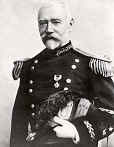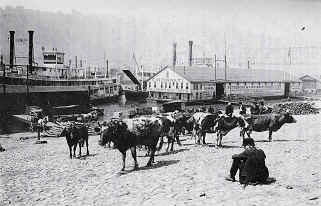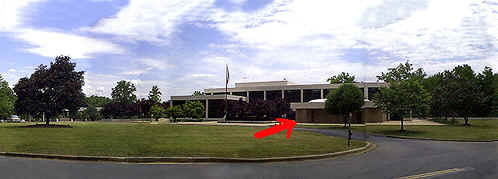Congress created the Board of Engineers for Rivers and Harbors on 13 June 1902
For more than 90 years, until disestablished by the Water Resources Development Act of 1992, the Board of Engineers for Rivers and Harbors (BERH) had a major impact on the water resources development activities of the Corps of Engineers.
The board was the brainchild of Congressman Theodore E. Burton (R-Ohio), chairman of the House Rivers and Harbors Committee. Frustrated by Congress’s persistent embrace of questionable water projects, Burton proposed the establishment of a board of Army engineers to review reports on river and harbor improvements submitted by Corps of Engineer officers. By applying uniform criteria, the board would presumably ensure that all localities and projects were treated fairly before recommending approval or disapproval.
 |
| Brig. Gen. Alexander Mackenzie, first Senior Member of BERH; later Chief of Engineers (1904-1908) |
After expanding briefly from 5 to 12 members, in 1913 the number was fixed at seven, “the majority of whom shall be of rank not less than lieutenant colonel.” Beginning in 1907 Division Engineers appeared on the board. Eventually the board solely consisted of Division Engineers, with the exception of the Chairman, earlier titled Senior Member (usually the Deputy Chief of Engineers), and the resident member, a colonel. Although the board had only five staff members in 1915, by the mid-1960s the number had grown to more than 70. They included engineers, economists, statisticians, water resources planners, and support personnel. Later, several environmental specialists joined the staff.
During its existence the board met over 1,400 days. It reported favorably on 3,966 reports and unfavorably on 4,939 reports. Its work was sometimes controversial. The BERH periodically persuaded the Chief to change review procedures as it did in 1906 when compelling the inclusion of specific cost information earlier in the review process. Although Chiefs usually concurred with board decisions, there were a number of reversals. One memorable instance involved a comprehensive plan to develop the water resources of the Arkansas River Valley. The board opposed the navigation features of the plan, while the Chief agreed with the local survey board and the Division Engineer and found them “fully warranted.” When the board disapproved projects in their state or district, members of Congress often would attempt to pressure the Chief of Engineers to reverse the decision. Generally, these attempts failed.
 |
|
| Working on the Port Series Reports, the board's staff collected numerous photographs, including one of an Ohio River terminal, ca. 1927. |
|
The board took on responsibilities other than its primary mission of reviewing reports on proposed water resource projects. Beginning in 1961 the board conducted the Planning Associates Program (later renamed the Planners and Project Managers’ Program). The course trained 386 individuals, many of whom rose to senior management positions in the Corps. The board also provided support to the Corps’ waterborne commerce statistics program, managed U.S. participation in the Permanent International Association of Navigation Congresses (PIANC), and helped prepare the Port Series Reports. The board’s resident member served as the Secretary of the Army’s alternate on the Foreign Trade Zones Board and occasionally represented the Chief as an ex-officio member of the National Capital Planning Commission (1960-1972).
Throughout its history, BERH was in the forefront in applying scientific and engineering expertise to water resources issues. Early on it emphasized the importance of public review, holding 27 hearings during its first fiscal year in locations from Duluth, Minnesota, to Tampa, Florida. The board asserted its right to modify or reject recommendations coming from reporting officers, to express opinions contrary to the Chief of Engineers, and to reach independent conclusions. While its decisions were not always greeted with universal acclaim, its influence unquestionably led to better reports and, hence, better water projects.
The board’s demise was related to the changes in the conduct and review of project studies. A disestablishment ceremony was held on 2 March 1993.

The Kingman Building, Alexandria, Va., final home of BERH (1973-1993).
The arrow denotes the board's hearing room named after General Mackenzie.
* * *
June 2002